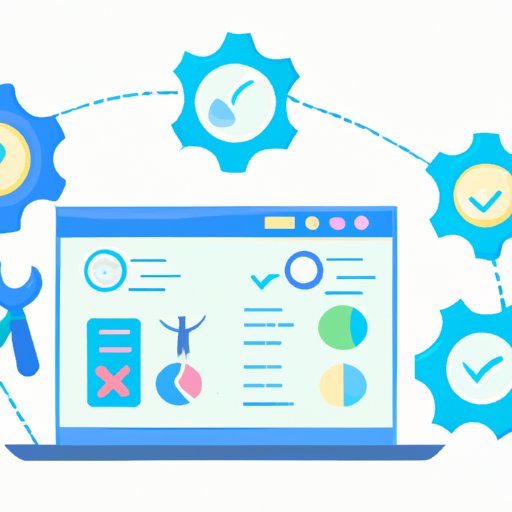Introduction
Social media automation is a powerful tool for businesses and organizations looking to increase their reach and engagement with customers and followers. It allows users to set up automated processes that will post content on their behalf, freeing them up to focus on other aspects of their digital marketing strategy. When it comes to automating social media, one of the most popular platforms is Twitter. With its expansive user base and wide range of features, Twitter is an ideal platform for automated accounts.
In this article, we’ll explore what it takes to automate a Twitter account. We’ll look at the benefits of automation, identify goals for the automated account, research the best tools for automation, set up an automation schedule, create rules and filters for automation, designate ownership of the account, monitor and adjust automation settings regularly, and evaluate the success of the automation efforts.
Definition of Automating a Twitter Account
Automating a Twitter account means using software or other tools to post content and interact with other users on your behalf. This could include posting updates, responding to messages, liking and retweeting posts, and more. Automation can be used to supplement manual activities, such as when you’re away from the office or too busy to respond to messages in a timely manner.
Overview of Benefits of Automating a Twitter Account
There are numerous benefits to automating a Twitter account. First, it can save time by taking care of routine tasks like posting updates and responding to messages. Second, it can help you reach a wider audience by automatically sharing content at peak times or to specific audiences. Third, it can free up resources so you can focus on more important tasks. Finally, it can help you build relationships with followers by engaging with them on a regular basis.

Identify Goals of Automating a Twitter Account
Before you start automating your Twitter account, it’s important to establish clear objectives for the process. What do you hope to achieve through automation? Do you want to increase followers, generate leads, or boost engagement? Once you have identified your goals, you can move on to the next step.

Determine Types of Content to Automate
The type of content you choose to automate will depend on your goals. For example, if you’re aiming to increase followers, you might consider automating tweets that contain links to interesting articles or videos. If you’re looking to generate leads, you might automate tweets that contain links to downloadable content such as ebooks or whitepapers. You should also consider the types of content that your target audience is likely to respond to.

Research Best Tools for Automating a Twitter Account
Once you’ve determined the types of content you want to automate, it’s time to find the best tools for the job. There are a variety of tools available, from free options to paid services. When researching different tools, consider their features and functionality, as well as their costs. Some of the most popular tools for automating Twitter accounts include Hootsuite, TweetDeck, and Buffer.
Set Up an Automation Schedule
Once you’ve chosen a tool, you’ll need to set up an automation schedule. This will determine when and how often content is posted. Typically, you should aim to post content at least once a day, but you can adjust this depending on your goals. You should also configure trigger events that will cause content to be posted, such as when a certain keyword is mentioned or a certain hashtag is used.
Create Automation Rules and Filters
You should also create rules and filters for your automated account. These will specify the conditions under which content is posted, such as whether it should be posted to all followers or just to a select group. You should also designate actions to take when triggers occur, such as responding to messages or retweeting a post.

Designate Ownership of the Automated Account
It’s important to designate ownership of the automated account. This could be a single user or a group of users. Whoever is responsible for the account should be familiar with the automation settings and be able to make necessary adjustments when needed. They should also monitor the account regularly to ensure that the automation settings are working as intended.
Monitor and Adjust Automation Settings Regularly
Even after you’ve set up your automation settings, you should check them regularly to ensure that they’re still working correctly. Things can change quickly on social media, so you should be prepared to make adjustments to the settings if necessary. This could include changing the frequency of posts or altering the content that is being posted.
Evaluate Success of Automation Efforts
Finally, it’s important to evaluate the success of your automation efforts. This could mean measuring the performance of the automated account in terms of followers, engagement, and leads. You should also analyze the results to determine what strategies are working and which ones need to be refined.
Conclusion
Automating a Twitter account can be a great way to save time and resources while also increasing your reach and engagement with followers. By setting clear goals, researching the best tools, establishing an automation schedule, creating rules and filters, designating ownership of the account, monitoring and adjusting settings regularly, and evaluating the success of your efforts, you can get the most out of your automated Twitter account.
(Note: Is this article not meeting your expectations? Do you have knowledge or insights to share? Unlock new opportunities and expand your reach by joining our authors team. Click Registration to join us and share your expertise with our readers.)
